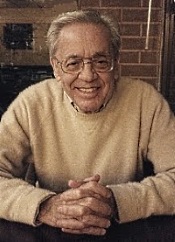Double Concerto; Piano Trio; Schumann: Violin Concerto. Joshua Bell, Music Director and violin; Steven Isserlis, cello; Jeremy Denk, piano; Academy of St. Martin in the Fields. Sony Classical 88985 32179 2.

So, if Music Director Joshua Bell and producer Adam Abeshouse decided to title the album "For the Love of Brahms," why did they include Schumann's
Violin Concerto as the second item on the program? The answer, of course, lies in the friendship and inspiration resulting from an early meeting of the young Brahms with the older Schumann (and his wife Clara). Let it suffice that Brahms found much encouragement from the older composer and his spouse.
Anyway, the first item on the program is the
Double Concerto in A minor for Violin, Cello and Orchestra, Op. 102 by Johannes Brahms (1833-1897). Brahms wrote it in 1887 as a kind of peace offering for his friend, violinist Joseph Joachim, with whom he had just had a dispute. The work would be Brahms's final composition for orchestra.
The
Double Concerto is an odd work, with critics of the day variously describing it as "inapproachable and joyless" on the one hand and as having "vast and sweeping humour" on the other. Certainly, Brahms intended it in good faith and said of it, "I had the jolly idea of writing a concerto for violin and cello. If it succeeds at all, we may well have some fun with it." One thing all critics agreed upon, though, was that it required a pair of distinguished performers on violin and cello, which is what we get in Joshua Bell and Steven Isserlis.
One can see from the outset what may have initially divided critics and listeners. The opening movement starts out in a fairly dark mood, the cello contributing heavily. The soloists both contribute to the music equally, the cello sounding appropriately sonorous and the violin aptly sweet. Then, as the work opens up, it gets lighter and brighter, with the
Andante appearing warmer and more harmonious than ever and the finale as lively as expected. The Academy of St. Martin in the Fields, always a welcome treat for me, accompanies the soloists with their usual polish and élan, Bell leading the ensemble with grace and passion. Moreover, because the flexible but essentially chamber-sized ASMF isn't as massive as some larger orchestras, they never overwhelm the soloists but complement them as equivalent partners.
Next we get the second, slow movement of the
Violin Concerto in D minor by Robert Schumann (1810-1856), a work with an even more erratic history than the Brahms. Schumann wrote the piece in 1853, but because of a series of bizarre events (including spirit voices and Adolph Hitler), it didn't see a premiere until 1937. Here, we find the
Langsam (slow, in the sense of slow physical movement and limited forward momentum), one of the loveliest of Schumann's creations. The performance is beautiful, heavenly even.
 |
| Joshua Bell |
The program ends with Jeremy Denk, piano, Joshua Bell, violin, and Steven Isserlis, cello, playing Brahms's
Piano Trio in B major (1854 version), the composer's very first published piece of chamber music. Again, it was Robert and Clara Schumann who inspired the young Brahms to write it. Under the careful guidance of the three soloists, the piece is glowing with good cheer, youthful buoyancy, captivating lyricism, and moody reflection.
Producer, recording engineer, mixer, and editor Adam Abeshouse made the album at Cadogan Hall, London, and DiMenna Center, New York City, in January and May 2016. The sound Abeshouse obtains is quite good, but don't expect it to be too much like that of Philips, Argo, and EMI in their earlier recordings of the Academy. Those recordings were slightly rounder (especially the Philips) and more reverberant than this Sony recording. This time out, the Academy is a slight bit closer yet a slight bit warmer. That doesn't make the newer recording better or worse, only a bit different, and listeners will decide for themselves whether it meets their taste.
For myself, I don't care for live recordings, but I do like recordings that strive to emulate the sound of a real orchestra in a real concert hall, which this one doesn't entirely achieve but comes close enough. The sound has a healthy, natural appeal to it, with a wide stereo stage, a wide frequency response, and a wide dynamic range. While there isn't an overabundance of resonant bloom, there is enough to recreate a pleasantly ambient environment, one that again seems to represent a lifelike venue pretty well. Detailing hasn't the reach-out-and-touch-it clarity of some hi-fi recordings, yet it scores with a remarkably truthful definition, about what one would find of a real-life event. Yes, the recording might have used a tad more sparkle, but maybe that's just me. The piano in the final number seems a touch too big for the other instruments, too, but, again, it's of minor matter. In all, it sounds quite nice, which is the main thing.
JJP
To listen to a brief excerpt from this album, click on the forward arrow:
 Look. I'm only going to say this one more time (or until I hear another disc from this source), so listen up. The folks at Cedille produce some of the best-sounding records in the industry. And as usual I'd like to commend engineer Bill Maylone for his contributions to the audiophile cause.
Look. I'm only going to say this one more time (or until I hear another disc from this source), so listen up. The folks at Cedille produce some of the best-sounding records in the industry. And as usual I'd like to commend engineer Bill Maylone for his contributions to the audiophile cause.























